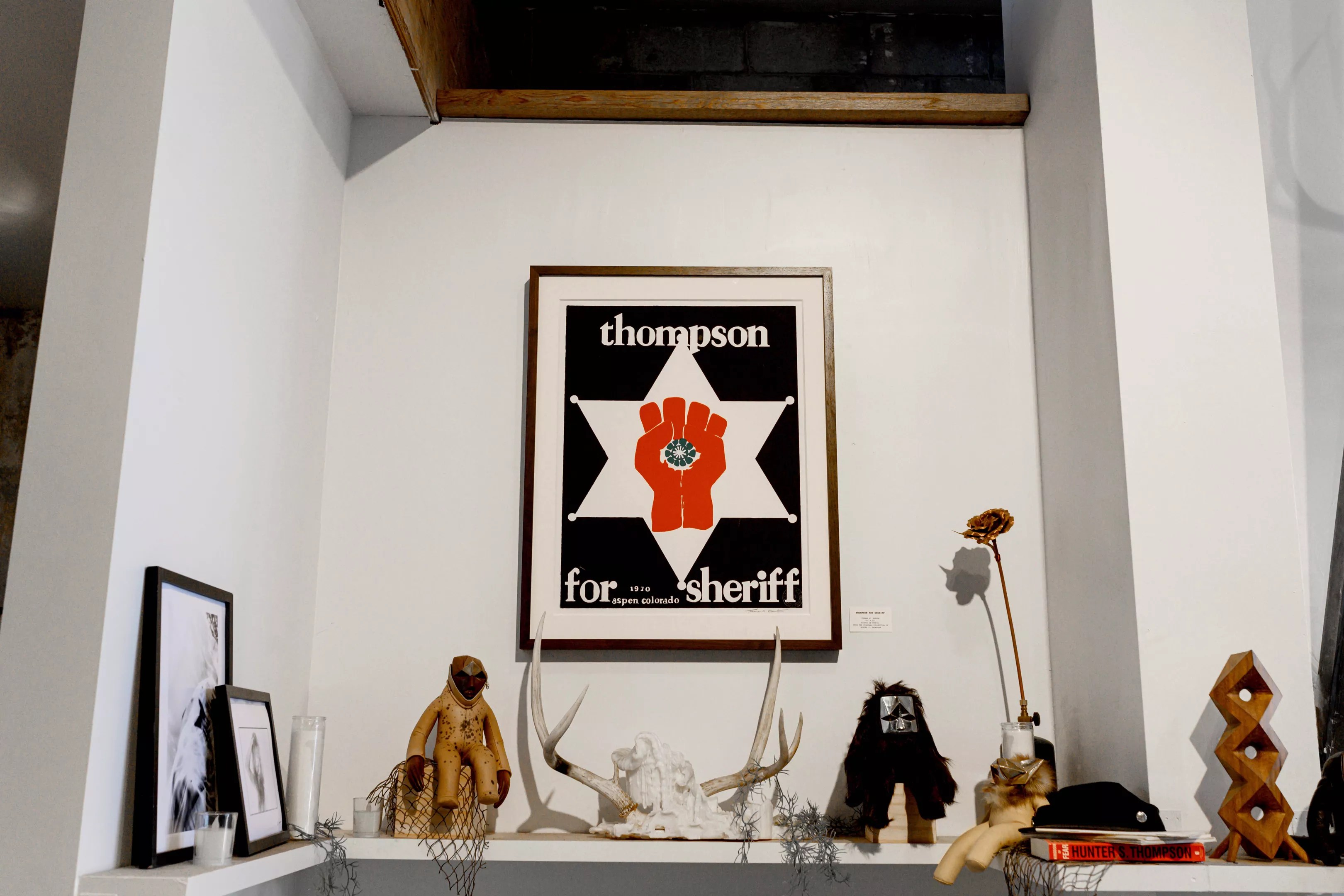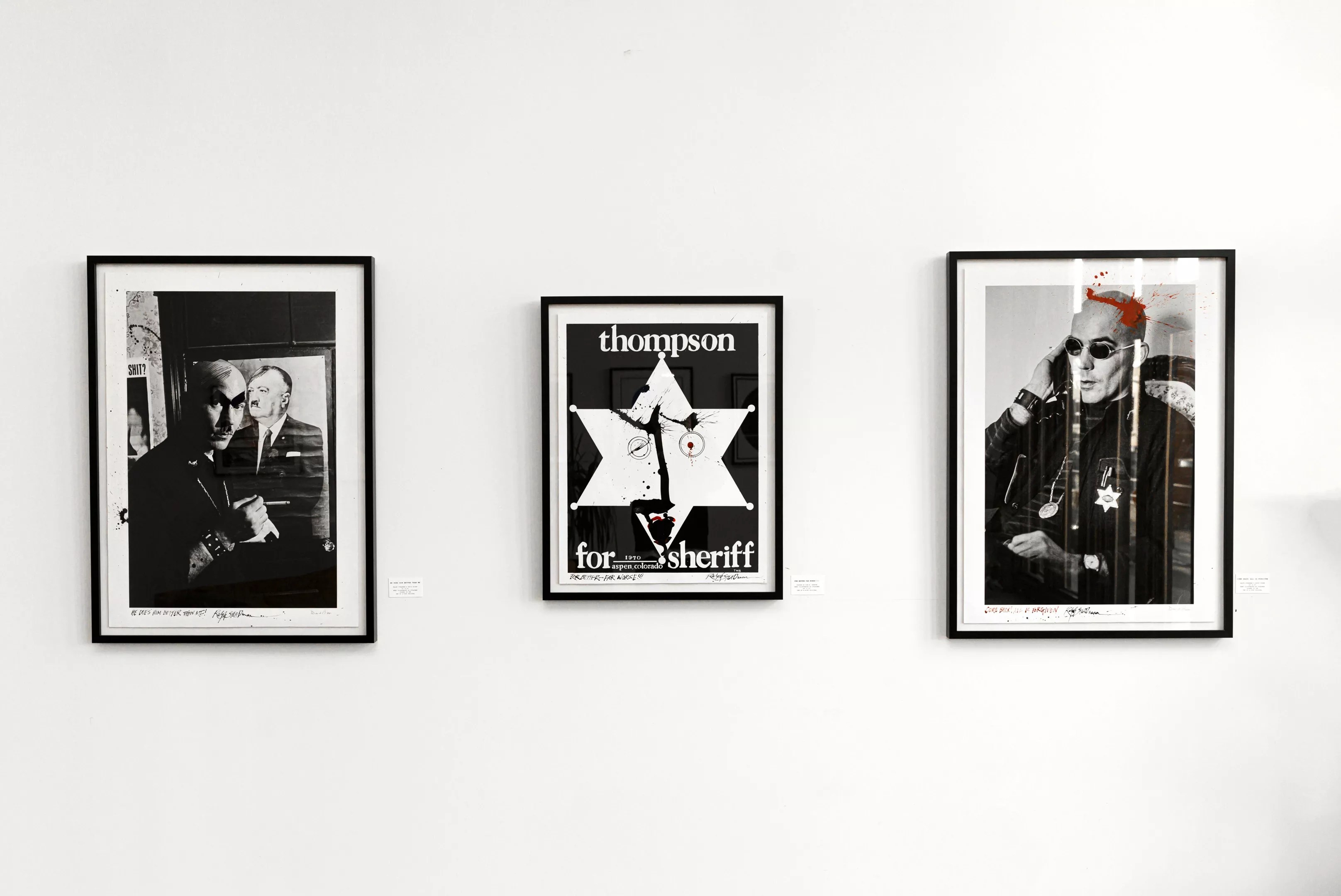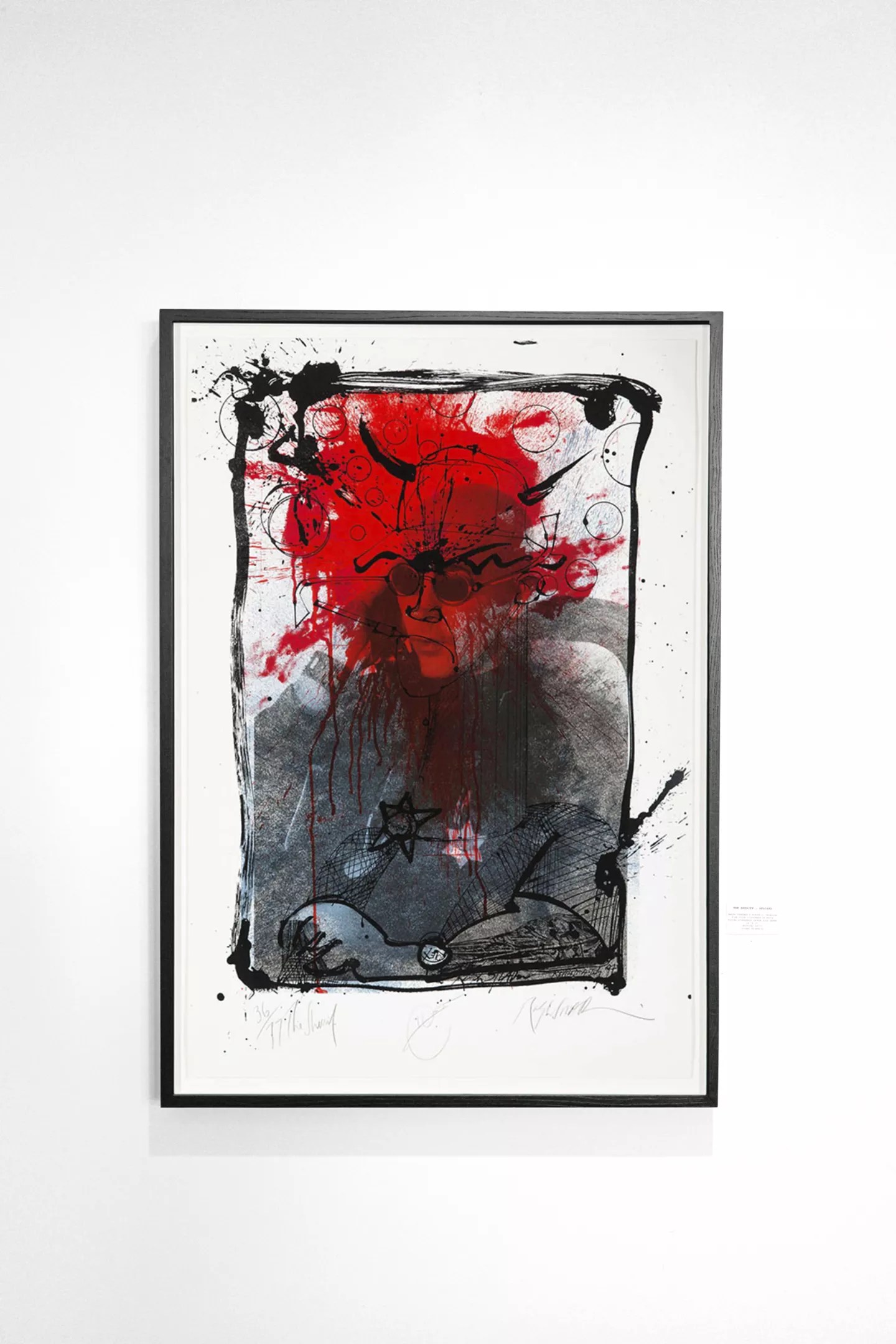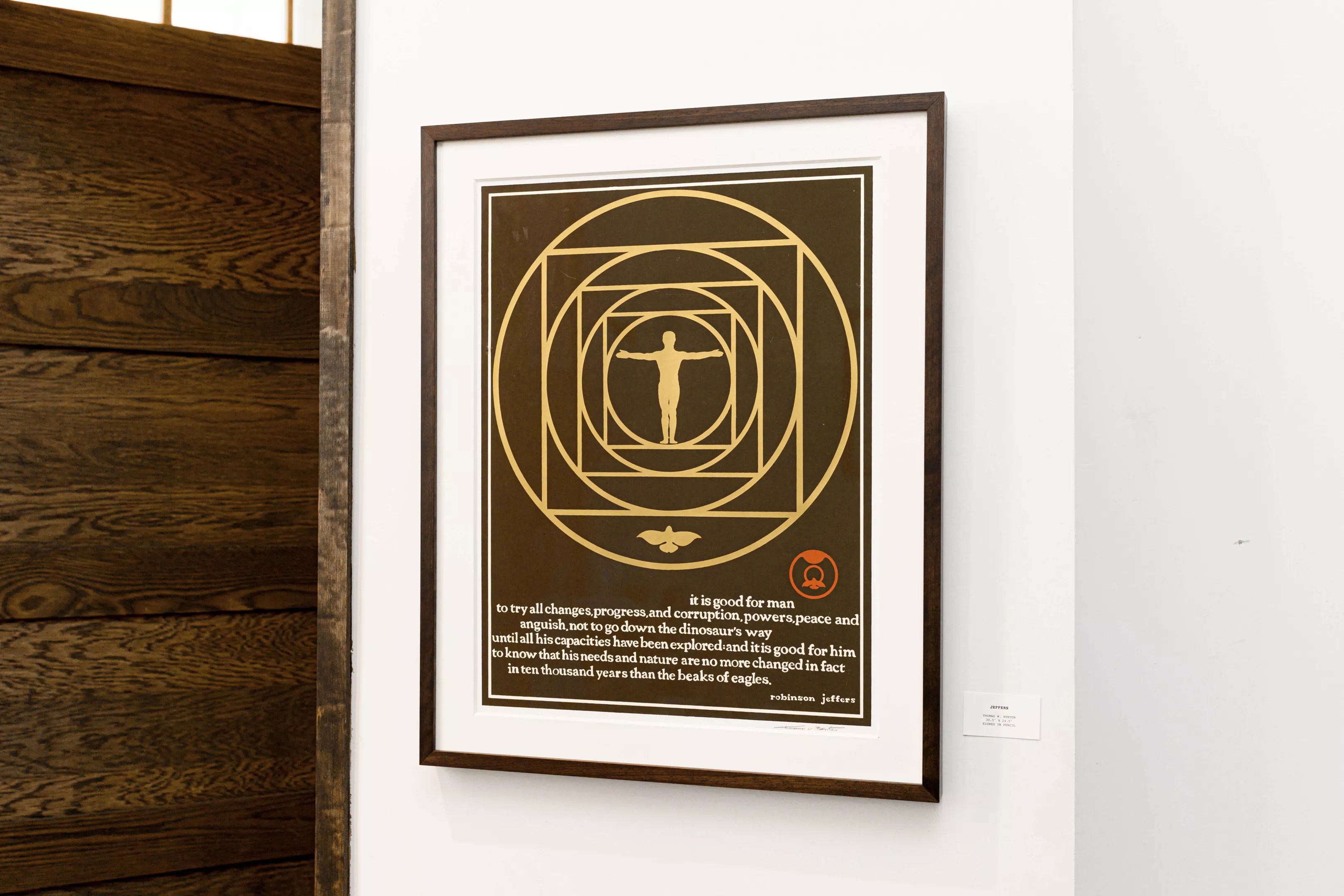
Jason Siegel

Audio By Carbonatix
In 1970, Hunter S. Thompson ran for sheriff of Aspen…and it wasn’t a hoax.
Although the countercultural hero and writer was already making a name for himself with his drug-addled, wildly subjective gonzo journalism in the pages of Rolling Stone, he took the sheriff’s race seriously. Using the same lopsided, first-person style in which he wrote – blasting his political enemies with such hyphenated descriptions as “land-rapers” – Thompson took on a Republican candidate, losing by 455 votes.
That race and the art surrounding it – much of it culled from garages, barns and yard sales of locals – are the subjects of an exhibit in the retail store/art gallery Foreign Form in RiNo, a place that Thompson might have used a few hyphenated phrases to describe were he alive to see it.
Foreign Form co-founder Sammy Steen’s fiancée, Mia Sadowsky – a family friend of the journalist who grew up calling him “Uncle Hunter” – introduced Steen to some of the remaining supporters of Thompson’s run for sheriff.
Steen’s curiosity about Thompson’s time in Aspen only grew after he befriended writer and curator Daniel Joseph Watkins inside his Gonzo Gallery, an Aspen-based art space spotlighting shotgun drawings by Thompson and his artistic cohorts, including arts activist Thomas W. Benton, illustrator Ralph Steadman and author William S. Burroughs, along with photography by David Hiser and other contemporary art.

Various works on display at Foreign Form.
Jason Siegel
The Gonzo Gallery was originally in Benton’s art studio, which served as a meeting place for artists and intellectuals in Aspen in the early ’70s, says Steen. The space doubled as a meeting room for the peace-minded Aspen Liberation Front and headquarters for Thompson’s run.
Benton, whose art helped shape the aesthetics of the winter-sports industry in Colorado mountain towns and whose political activism has largely been forgotten, passed away in 2007. Yet his oeuvre spans more than five decades and includes masterful screen prints and serigraphs, as well as political posters he designed for more than fifty candidates.
Benton and Thompson came together in the late ’60s, after Thompson bought a home outside Aspen. Benton created the poster for the 1970 contest: a red, two-thumbed fist clutching a green peyote button in the middle of a white sheriff’s badge. The simplicity of the poster belies the heavier ideas that Thompson was pushing, including the decriminalization of drugs, grassy pedestrian strips instead of roads, and renaming Aspen “Fat City” to scare away developers.
Between Benton’s graphics and Thompson’s reporting in Rolling Stone, people around the country paid attention to the race. Together they created the Aspen Wall Posters Collection, a series of political images and writing by Benton, Thompson and illustrator Steadman – much of which is on display at Foreign Form.
There are fifteen works from different parts of this interesting piece of Aspen history, on loan from the Gonzo Gallery and Watkins. First off is the aforementioned “Thompson for Sheriff” poster, which was printed in a limited-edition run and signed by Benton; it’s now listed for $10,500 or as part of a six-part series for $125,000 at Benton’s website.

Works by Ralph Steadman hang on the walls of Foreign Form.
Jason Siegel
The exhibit also includes photographs of Thompson taken by Hiser during the former’s run for office. The photographs were then illustrated by Steadman, using his chaotic scribble technique that evokes blood splatter. Then there’s the original “Dr. Gonzo” drawing by Steadman that will be recognizable to anyone familiar with Fear and Loathing in Las Vegas. And there’s a framed fax from Thompson with a doodle and a quote, showing his initial refusal to collaborate with Steadman – a partnership that was assigned by a third party and eventually worked out beautifully.
From there, the show illuminates how some of the most long-lasting effects of the writer’s presence have been felt in Colorado. While Thompson changed the ideals of Aspen, Benton solidified the branding of the world-famous ski town.
“Benton is such an important part of Colorado art and history that our generation has no idea about,” Steen says. The works on display inside Foreign Form exclusively created by Benton in the ’60s and ’70s “are so moving and have really stood the test of time,” he continues. “And they have a certain aura about them which just simply can’t be explained.”
Six serigraphs on display have survived for decades without any perceptible color fading. And the color choices starkly contrast with each other – navy blues and beige, white and red, black and gold. The representation of the iconic mountain scenery is Bauhausian in its simple linework, likely taking inspiration from one of the pioneers of the Bauhaus movement, Herbert Bayer, who lived in Aspen. Bayer designed many of the town’s logos and posters before Benton or Thompson arrived.

Thomas W. Benton used simple lines in his prints.
Jason Siegel
Benton’s simple lines and contrasting colors helped Thompson successfully brand his campaign. While Steadman’s disorderly illustrations reflect Thompson’s notoriously excessive drug use, Benton’s posters evoke the visionary ethos of the counterculture to which Thompson was devoted.
“It’s a classic underdog story: the idea of a couple of beatniks bucking the tide and standing up for their right to thrive in Aspen,” says Steen, who has committed to helping resurrect this history. “Unfortunately, the piece of gonzo that gets much publicized is the lifestyle of drug use…but at the core, this was a group of individuals that saw injustice and banded together to enact change in their community.”
The Thompson-related artwork will be on display through February 5 at Foreign Form, 2719 Larimer Street.
Corrections, January 21, 2019: An earlier version of this story misstated the price of Benton’s “Thompson for Sheriff” poster, described the sheriff’s race as a mayoral race in one instance, and cited incorrect data on the number of votes Thompson lost by.